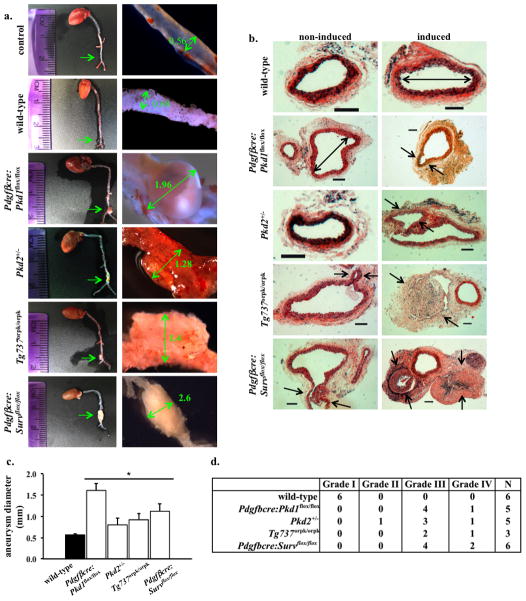Figure 3.
Aneurysm formation is an extra-renal phenotype of PKD. (a) Aneurysm surgery was performed in mice at one-month-old and mice were sacrificed at three months of age. The aortas were isolated and their diameters were measured at the surgical site. Unlike wild-type, Pdgfβcre:Survivinflox/flox mice showed a severe aneurysm induction to a similar extent shown in Pdgfβcre:Pkd1flox/flox, Pkd2+/−, and Tg737orpk/orpk mice. (b) Representatives of cross-sections of aortas at the aneurysm surgery site are shown in control wild-type, Pdgfβcre:Pkd1flox/flox, Pkd2+/−, Tg737orpk/orpk, or Pdgfβcre:Survivinflox/flox mice with and without aneurysm surgery. Similar to Pdgfβcre:Pkd1flox/flox, Pkd2+/− and Tg737orpk/orpk mice, Pdgfβcre:Survflox/flox mice exhibited aneurysm formation and aortic dilation compared to wild-type mice. Arrows point to aneurysm formation, and double head arrows point to aorta diameter. N≥3 for each group and genotype. Bar=200 μm. (c) Bar graph shows averaged values for aorta diameter in wild-type, Pdgfβcre:Pkd1flox/flox, Pkd2+/−, Tg737orpk/orpk, or Pdgfβcre:Survivinflox/flox mice. (d) The grade of aneurysm is also tabulated.

